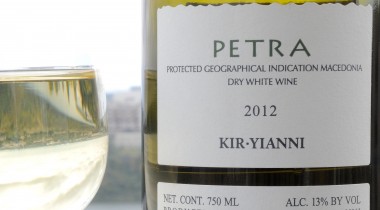It’s been brought to my attention (Thanks Bill!) that most people haven’t a clue what I’m talking about when I mention Kir-Yianni in the next post. So here’s my take on the grape. It’s not common – you’ll need a good wine store with a broad international selection, probably near a Greek neighbourhood. On the other hand it’s a steal of a deal under $20.
 If you are of a certain age the phrase “greek wine” conjures sun baked islands, retsina (harsh red wine flavoured with pine resin) and pitchers of tart white wine the colour of urine. This is the problem for modern Grecian vintners – a bunch of super-annuated drinkers like me, who would rather be dead in a ditch than face the rigours of Greek wine again.
If you are of a certain age the phrase “greek wine” conjures sun baked islands, retsina (harsh red wine flavoured with pine resin) and pitchers of tart white wine the colour of urine. This is the problem for modern Grecian vintners – a bunch of super-annuated drinkers like me, who would rather be dead in a ditch than face the rigours of Greek wine again.
Greece is the cradle of modern European wine. Their grapes were exported to Italy and the south of France. Their techniques were copied and improved upon. And even today they harbour a number of grapes that would do well when planted abroad. More importantly they too have imported modern viticulture and vinification techniques back into their country.
There are a handful of reds on the shelves here (I have recommended Naoussa in the past in this column) and two whites. One of the whites has a small following as a bargain Muscat (AKA Moscato). The other is fairly new and deserves white wine drinkers give it a try.
For the cork dorks in the audience it is blend of Roditis and Malagouzia grapes. I know what you’re thinking. “Not ANOTHER Roditis/Malagouzia blend.” Roditis is a pink skinned grape that resembles pinot noir. It has the wonderful capacity to maintain acidity in hot climates. Malagouzia is an ancient grape going back to biblical times and probably earlier, and makes elegant aromatic wines.
The combination produces a light coloured white with a citrus and lemon zest bouquet, a crisp palate with – and this surprised me – a very round finish. The zip of the attack and the lingering finish are the hallmarks of a first rate food wine. Opa!